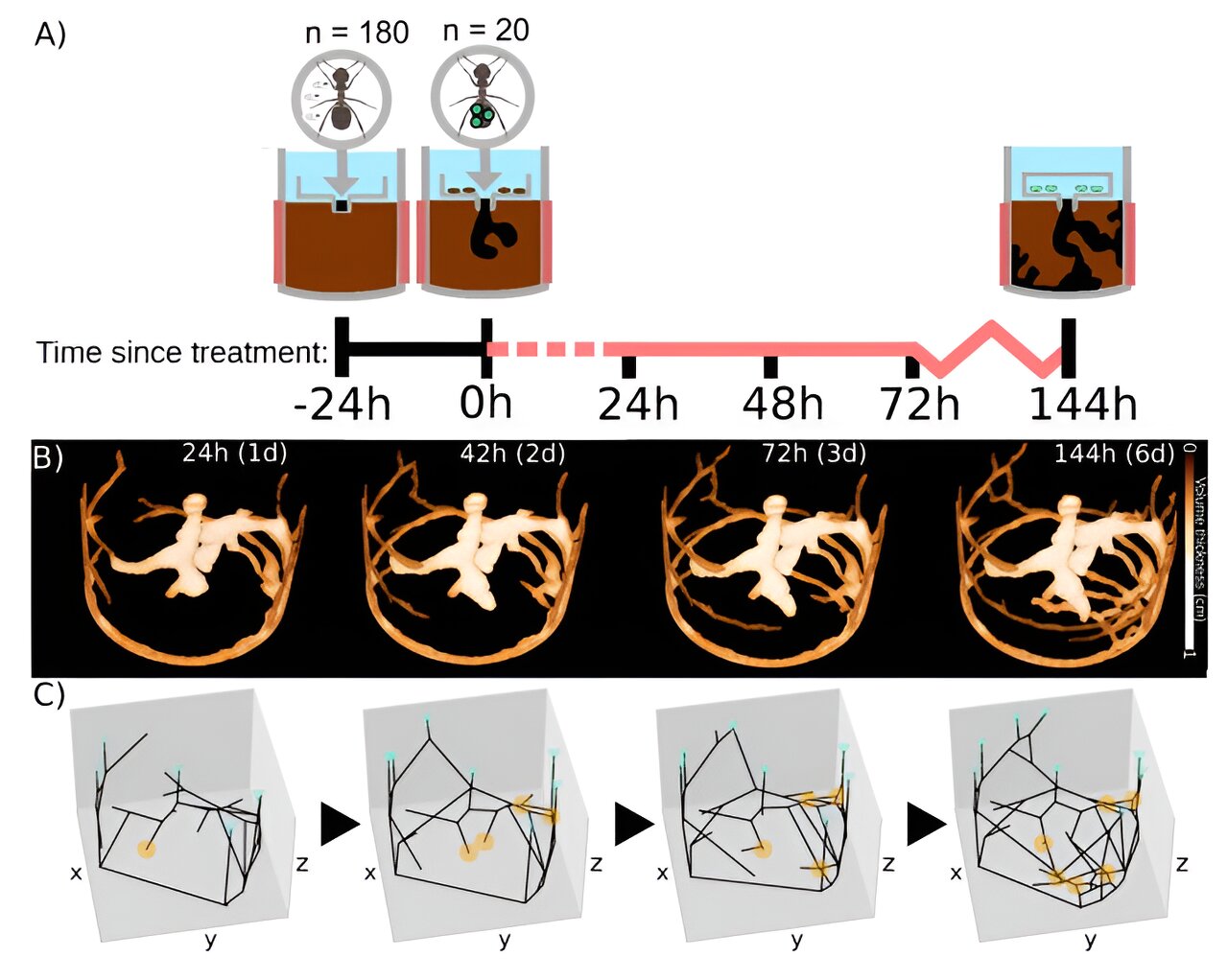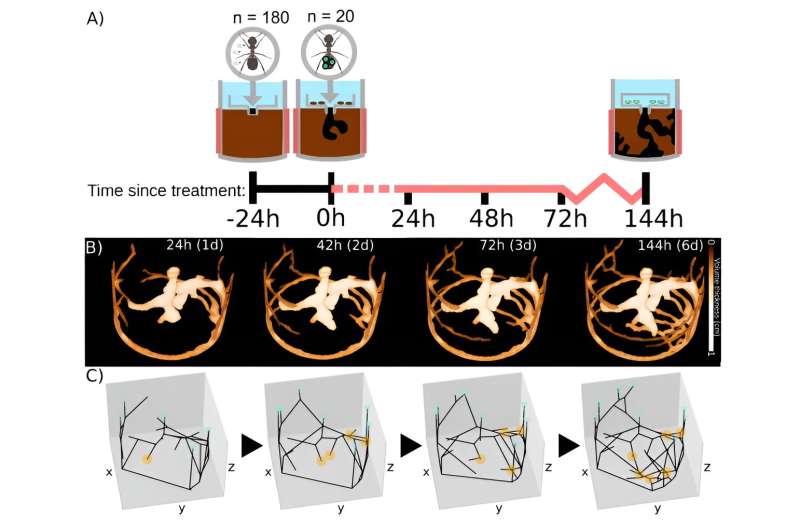

A small team of biologists at the University of Bristol has found that black garden ants modify the physical structure of their nests to mitigate infection spread. The group has written a paper describing the experiments they conducted with black garden ants and fungal infections in their lab and posted it on the bioRxiv preprint server.
Prior research has shown that some animals change their behavior to avoid spreading infections, whether they be viral, bacterial or fungal. Among those, only humans have been found to alter their surroundings as a way to further protect themselves—people might close off parts of their house, for example, or establish quarantine zones within hospital areas.
In this new study, the research team found an instance of an insect altering its nest to deter the spread of an infecting fungus.
To learn more about how insects, such as ants, attempt to prevent the spread of an infection among members of a nest, the research team went into the field and collected black garden ants—enough to set up 20 colonies in their lab, each in its own glass enclosure.
After giving the ants a single day to acclimate themselves to their new environment, the researchers added 20 more ants to each colony—half of which were infected with a fungus known to spread among the ants.
The research team then set up cameras to record the behavior of the ants and micro-CT scanners to study the nature of the nest tunnels that the ants dug beneath the soil.
The team found that in the colonies with the infected ants, new tunnels were dug faster than in those not infected. After six days, the spacing between the tunnels was farther apart in the infected nest as well.
The ants in the exposed colonies also placed their queen, food and brooding area in a less central location. And finally, those ants that were infected tended to spend most of their time on the surface, rather than underground with their nestmates.
The researchers next used disease transmission simulations to speed up the process of disease spread and found that the techniques used by the ants did indeed reduce the fungal load in the colony, helping the nest survive.
More information:
Luke Leckie et al, Architectural Immunity: ants alter their nest networks to fight epidemics, bioRxiv (2024). DOI: 10.1101/2024.08.30.610481. www.biorxiv.org/content/10.110 … /2024.08.30.610481v1
© 2024 Science X Network
Citation:
Black garden ants modify the structure of their nests to mitigate fungal infection spread (2024, September 20)
retrieved 20 September 2024
from https://phys.org/news/2024-09-black-garden-ants-mitigate-fungal.html
This document is subject to copyright. Apart from any fair dealing for the purpose of private study or research, no
part may be reproduced without the written permission. The content is provided for information purposes only.